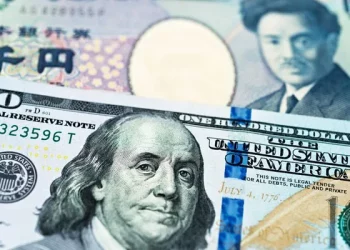Swiss francs are one of the most recognizable currencies in the world. The design of these notes reflects the country’s cultural heritage, political history, and economic stability. In this article, we will explore what makes the Swiss franc unique, from its appearance to its significance.
What does a Swiss Franc look like?
The Swiss franc is a colorful combination of intricate designs and elements that reflect the country’s culture, traditions, and natural beauty. One side of the note features an image of a prominent historical figure, while the other side showcases various Swiss landscapes and emblems.
Design Elements
- The Swiss franc is printed in multiple colors with complex patterns, making it difficult to counterfeit.
- Each note has a distinctive size and color scheme, ranging from yellow, blue, green, red, and brown.
- The front of the note features a portrait of a famous Swiss citizen, such as William Tell or Sophie Taeuber-Arp.
- On the back, there are images of Swiss landmarks and symbols, including the Matterhorn, the Edelweiss flower, or a cow.
Security Features
- The Swiss franc is considered one of the most secure currencies globally, thanks to its advanced security measures.
- Each note has a hologram stripe and a watermark, providing visual authentication.
- The banknote paper is made of high-quality cotton fiber, making it more durable than regular paper.
- Additionally, the Swiss National Bank regularly updates its security features to stay ahead of counterfeiters.
Which denominations are available?
Swiss francs come in six denominations, each with its unique design and color scheme.
- 10 CHF – Brown
- 20 CHF – Red
- 50 CHF – Green
- 100 CHF – Blue
- 200 CHF – Yellow
- 1000 CHF – Purple
The higher the denomination, the larger the note’s size, and the more intricate the design.
Why is the Swiss Franc significant?
The Swiss franc has a long-standing reputation for stability, both politically and economically.
Political Stability
- Switzerland is known for its political neutrality and has remained neutral in armed conflicts since 1815.
- The country is a federal republic with a stable democratic system that prioritizes individual rights and freedoms.
Economic Stability
- Switzerland has one of the world’s most stable economies, with a low inflation rate and high GDP per capita.
- The Swiss National Bank’s strict monetary policy has prevented excessive inflation or deflation.
Tips for handling Swiss Francs
If you’re traveling to Switzerland, it’s essential to know how to handle and spend Swiss francs correctly.
Exchange Rates
- Know the current exchange rates to avoid getting short-changed when exchanging your currency.
- Be aware that some banks or exchange offices may charge a commission for their services.
Payments
- Many places in Switzerland accept credit and debit cards, but cash is still widely used.
- Small shops and vendors may not accept large denomination notes, so it’s good to have smaller bills on hand.
ATMs
- ATMs are widely available in Switzerland, but make sure to check if your bank charges fees for international withdrawals.
- Look for ATMs that display the “Maestro” or “Cirrus” logos to ensure compatibility with your card.
Collecting Swiss Francs
Many collectors around the world are drawn to the beauty and unique design of Swiss francs, making them highly sought after.
- Swiss francs have been in circulation since 1850, with older notes being highly valuable.
- Some collectors focus their collection on specific denominations or series, while others collect based on rarity or historical significance.
- The Swiss National Bank issues commemorative coins and notes, creating a special edition for collectors every year.
The Future of Swiss Francs
The Swiss franc has maintained its strength and stability over the years, but it’s not immune to changes.
- In recent years, there has been discussion about Switzerland joining the European Union and switching to the euro.
- However, the Swiss people remain divided on the issue, and any change would require a referendum.
- Additionally, advancements in technology and the rise of cryptocurrencies may pose new challenges for traditional forms of currency like the Swiss franc.
In conclusion, the Swiss franc is not just a currency but also an embodiment of Switzerland’s rich culture and history. Its design reflects the country’s beauty and values, while its stability represents the people’s dedication to their democracy and economy. Understanding the significance of the Swiss franc can help tourists and visitors appreciate its value and use it wisely during their stay in Switzerland.
Related Topics:



























